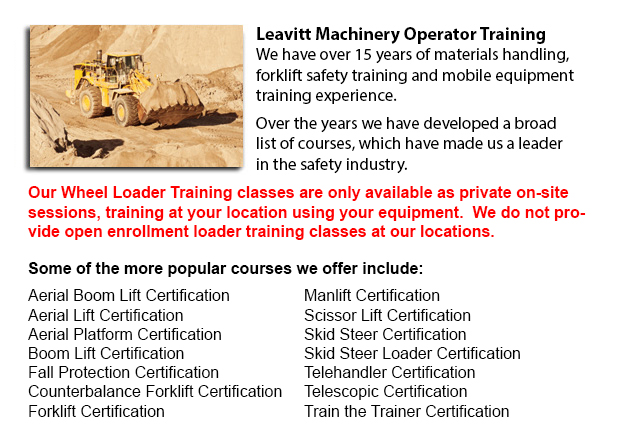
Lift trucks are accessible in several other models that have different load capacities. The majority of typical lift trucks used in warehouse settings have load capacities of 1-5 tons. Larger scale models are utilized for heavier loads, like for instance loading shipping containers, may have up to 50 tons lift capacity.
The operator can utilize a control to raise and lower the blades, which may also be referred to as "blades or tines". The operator of the lift truck can tilt the mast so as to compensate for a heavy loads tendency to tilt the tines downward. Tilt provides an ability to work on uneven ground as well. There are yearly competitions meant for experienced forklift operators to compete in timed challenges as well as obstacle courses at regional forklift rodeo events.
General utilization
All lift trucks are rated for safety. There is a specific load limit and a specific forward center of gravity. This vital info is supplied by the manufacturer and located on the nameplate. It is essential loads do not exceed these specifications. It is prohibited in numerous jurisdictions to interfere with or take out the nameplate without getting permission from the forklift maker.
Most lift trucks have rear-wheel steering in order to enhance maneuverability inside tight cornering situations and confined areas. This particular type of steering differs from a drivers' first experience with different vehicles. For the reason that there is no caster action while steering, it is no needed to utilize steering force to be able to maintain a constant rate of turn.
Instability is one more unique characteristic of lift truck operation. A continuously varying centre of gravity occurs with every movement of the load between the forklift and the load and they must be considered a unit during utilization. A lift truck with a raised load has gravitational and centrifugal forces that may converge to result in a disastrous tipping mishap. So as to avoid this possibility, a lift truck must never negotiate a turn at speed with its load raised.
Forklifts are carefully made with a particular load limit meant for the blades with the limit decreasing with undercutting of the load. This means that the freight does not butt against the fork "L" and would lessen with the rise of the blade. Normally, a loading plate to consult for loading reference is placed on the forklift. It is dangerous to use a lift truck as a personnel hoist without first fitting it with specific safety devices such as a "cage" or "cherry picker."
Lift truck utilize in distribution centers and warehouses
Forklifts are an important part of distribution centers and warehouses. It is essential that the work surroundings they are positioned in is designed to accommodate their safe and efficient movement. With Drive-In/Drive-Thru Racking, a forklift has to travel in a storage bay that is many pallet positions deep to set down or get a pallet. Operators are normally guided into the bay through rails on the floor and the pallet is positioned on cantilevered arms or rails. These confined manoeuvres require skillful operators to be able to carry out the task efficiently and safely. As each and every pallet requires the truck to go in the storage structure, damage done here is more common than with other types of storage. When designing a drive-in system, considering the measurements of the fork truck, including overall width and mast width, should be well thought out so as to be certain all aspects of an effective and safe storage facility.
-
Ottawa Boom Lift Ticket
Ottawa Boom Lift Ticket - Boom Lifts are a table lift piece of equipment which could be lifted or lowered to varying heights, making this apparatus a useful tool for many manufacturing purposes. There are some unique types of Boom Lift consisting of... More -
Ottawa Boom Lift Operator Training
Ottawa Boom Lift Operator Training - The cherry picker work platform is a kind of work platform, which will typically have a bucket or platform at the hydraulic lifting system's end. The device is also referred to as a man lift, boom lift, basket cra... More -
Aerial Lift / Boom Lift / Man Lift / Scissor Lift Training in Ottawa
Scissor lifts are forklift tables which raise objects and people and supplies vertically. They are normally utilized in industrial, construction and commercial environments. A common use of scissor lifts is for lifting or lowering construction suppli... More -
Ottawa Crane Certification
Ottawa Crane Certification - The Crane Certification training program covers content suggested by industry concerning the safe and efficient operation of cranes. Individuals training would know the following: pre-operational, operational and post ope... More -
Ottawa Heavy Equipment Training Courses
Ottawa Heavy Equipment Training Courses - The first step required to take when selecting heavy equipment operator courses is determining the capacity you wish to work with heavy machinery. Like for example, you can take courses that will teach you ho... More -
Ottawa Fall Protection Ticket
Ottawa Fall Protection Ticket - Fall-related accidents are the number one reason of death in the construction trade. The potential for fall accidents very much increases based on the kind of work which is being completed within your workplace. So, be... More -
Ottawa Telehandler Operator Training
Ottawa Telehandler Operator Training - Telescopic handler Forklifts or telehandler forklifts are common industrial machinery seen in various construction business settings. The telehandler is a useful machine and makes for a valuable tool that can be... More -
Fall Protection Training in Ottawa
Regrettably, there is a large number of workplace injuries linked to falling and lots of fall-related deaths reported each year. Lots of these instances might have been prevented by having proper measures in place, offering proper training and equipp... More

Forklift Certification Ottawa
TOLL FREE: 1-888-254-6157
Ottawa, Ontario
forkliftcertificationottawa.com
Email Us
About Us


